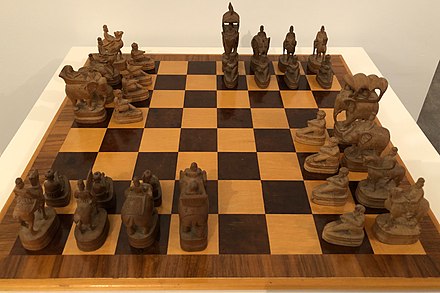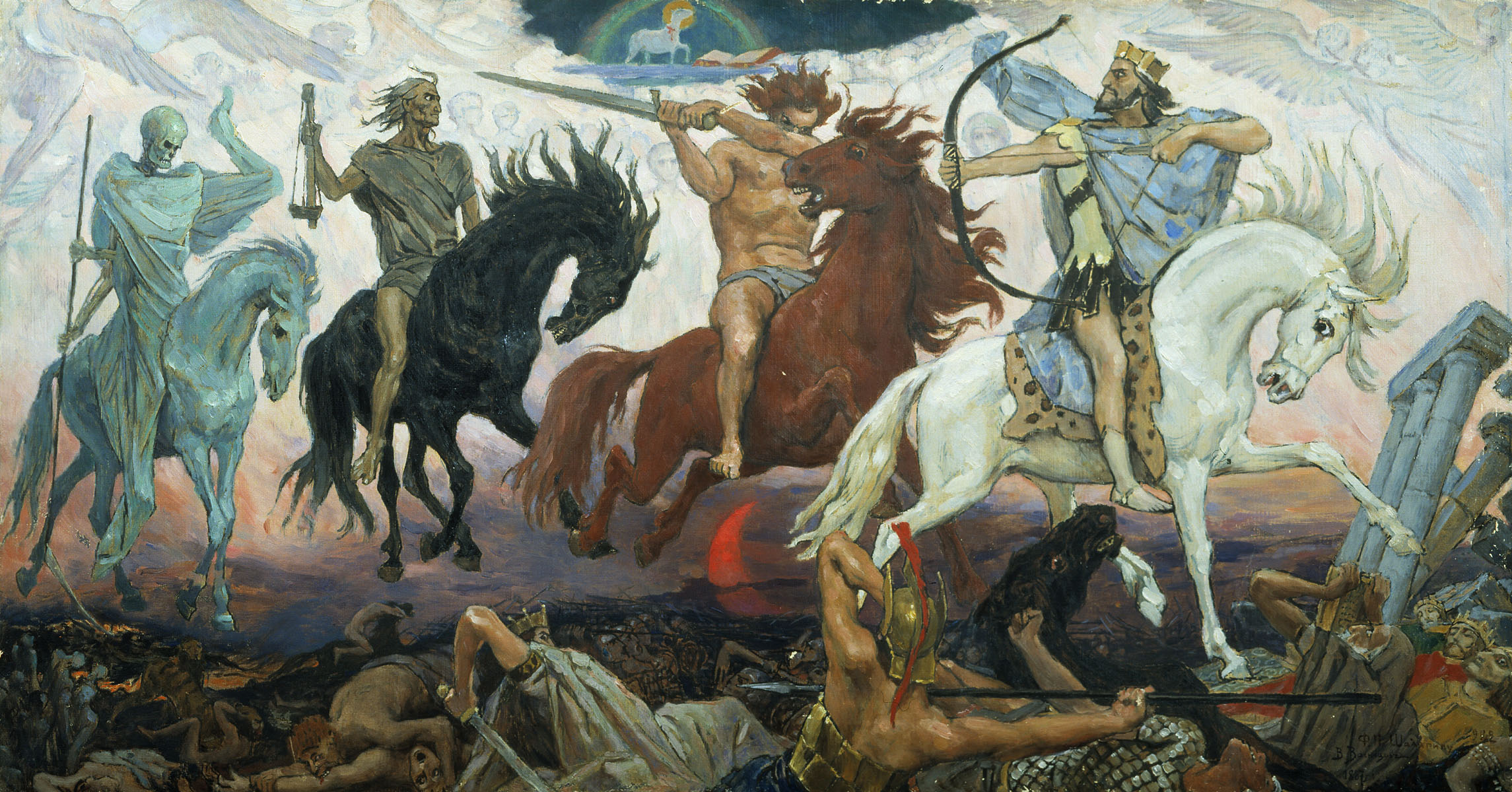Hade aldrig kunnat hända i Florens på 1400-talet...
The blog to end all blogs. Reviews and comments about all and everything. This blog is NOT affiliated with YouTube, Wikipedia, Bing AI or any commercial vendor! Links don´t imply endorsement. All photos are credit Wikipedia. Many posts and comments are ironic. The blogger is not responsible for comments made by others. The languages used are English and Swedish. Content warning: Essentially everything.
Thursday, September 30, 2021
Veckans Strasser
Expressen nämner detta i förbigående, Aftonbladet inte alls. Fast Fria Tider kanske ljuger? Eller också är det politiskt enklare att hantera Anderssons bruk av marihuana för 100 år sedan, än att diskutera hennes (förmenta) invandringskritik? Annars ganska lustigt att den nya SAP-ledaren lyckas kvala in till Veckans Strasser redan innan hon tillträtt...
Wednesday, September 29, 2021
Buddha among the merchants
"Theravada Buddhism: A social history from ancient Benares to modern Colombo" is often regarded as the magnum opus of Richard F Gombrich, one of the most prominent scholars of Buddhism in the world. The first edition was published in 1988, the second (which I have read) in 2006. The book deals with two somewhat different topics: primitive or ancient Buddhism in India, and contemporary Theravada Buddhism in Sri Lanka. This blog post will deal with the former topic.
Gombrich is no "revisionist", never denies that Buddha was a real historical person, and clearly believes that historical information on both "Gotama" and early Buddhism can be teased out of the Pali Canon. Other evidence comes from the rock pillar edicts of Ashoka. The social context of early Buddhism can be stitched together, perhaps with some difficulty, from the Vedic and Jain scriptures, and from various archeological evidence.
In Gombrich´s estimate, Siddharta Gautama (the historical Buddha), lived circa 484 - 404 BC. He places the reign of Emperor Ashoka Maurya, the first powerful Buddhist ruler in India, at around 268 - 239 BC. Gombrich also accepts the tradition that the Buddha came from a small "kingdom" at the northern outskirts of the Vedic or Brahminical civilization, Kapilavastu in Nepal. His people, the Sakyas, had a "tribal" organization quite unlike the normative Vedic ditto, with a ruling council instead of a single autocratic ruler, and no varnas (although social stratification certainly existed). Presumably, this means that no Brahmin priesthood existed there. Since peoples in the Vedic-Brahminic orbit "translated" foreign class concepts into the language of varna, Buddha was defined as a "kshatriya", hailing as he did from the ruling stratum of the Sakyas.
Buddha´s new teachings could be seen as anti-Brahmin on a number of salient points. Thus, Buddha rejected the traditional Vedic sacrifices, carried out by Brahmins. Buddha believed that there were three root reasons to our suffering: greed, delusion and hate. Gombrich believes that this was a implied criticism of the three sacrifical fires! Instead of exoteric ritual, what is important is ethical intention and the working out of your own salvation, in other words, interior factors each individual could at least in principle attain. That is, each individual regardless of class or caste. While many members of the Buddha´s Sangha (monastic order) were ex-Brahmins, other social groups were certainly represented. There was also a small number of Buddhist nuns. Buddha´s preaching also contained criticism of kings, who are often compared with bandits or thieves.
However, Gombrich doesn´t believe that any of the above made Buddhism a radically egalitarian or revolutionary religion. Rather, Buddhism appealed to groups we would today consider "middle class", but also to some rulers. Above all, it was the religion of the vaishya merchant class. This was a period in Indian history marked by rapid urbanization, increased trade and improved agriculture. Classical Vedic civilization was very "rural" and socially conservative. In the urban centers and trade hubs, by contrast, other social mores came to the fore. The peasants improved their lot (at least materially), perhaps becoming more independent of traditional social hierarchies. The individualism and anti-ritualism (or anti-Brahminism) of Buddhism appealed to merchants and well-to-do farmers. Gombrich also speculates that since urban life was for centuries marked by disease, high mortality and suffering, the Buddhist idea that life is fundamentally unsatisfactory (unless cured by Buddhist practice) must have seemed more logical than the Vedic view, which is more positive towards earthly existence. As peasants migrated south along the Ganges, their lives also became harder in some ways (despite more surplus produce) due to new diseases. Everything really was "suffering"! The Buddha spent most of his time in north Indian cities, not in forest caves in the Nepalese wilderness, and the first monasteries were also founded in cities.
Gombrich seems to believe that the split between Buddhist monastics and lay people (which looks peculiar to, say, Protestants or Muslims) is of a very early date. The other-worldly Sangha is complemented by the more this-worldly lay people, who "only" want a better rebirth, rather than enlightenment or nirvana (nibbana). The monks bless the ethical this-worldly pursuits of the non-monastics, who in turn support the Sangha with food and other resources. This creates the curious situation that Buddhist monks may bless the pursuits of material riches by a merchant, while themselves presumably standing aloof of such things (note, however, that Buddhism may have spread outside India precisely through merchants and the monks accompanying their caravans).
Despite Buddha´s criticism of kings, the Sangha did quickly reach an accommodation with the royal power. I assume this was a new form of territorial power based on the emerging cities, rather than on the classical Vedic kings, who roamed the countryside with no defined boundaries between different kingdoms. The integration of the Sangha into the wider polity also blunted any tendencies towards social egalitarianism. Thus, slaves and debtors were barred from becoming monks, indeed, the Sangha itself became a slave-owner (and land-owner). Soldiers were also prohibited from defecting and joining the (pacifist) Sangha. In return, the kings helped the Sangha with expelling wayward monks. Without the backing of the royal power (and its bailiffs?), the Sangha would not have been able to force expelled monks from actually disrobing and leaving the monastic communities. The merchant-orientation of early Buddhism can further be seen in the advice given to kings, that they should hand over resources to merchants for investment! No Buddhist ruler is known to have done so.
Gombrich, perhaps controversially, believes that the standard interpretation of nirvana as some kind of cosmic suicide is simply "WRONG" (his caps). The Buddha was primarily interested in solving the problem of "suffering" (the Pali word really means something like "unsatisfactory") by practical techniques in the here and now. Through right conduct and meditation, the mind would become perfectly serene, cool and detached. It´s not clear what Gombrich thinks the Buddha believed about nirvana as an afterlife state. He does admit that the doctrines of nirvana and no-soul later became "metaphysical". But then, it´s surely difficult to avoid the impression that Buddhism is teaching a bizarre form of annihilationism...
Overall, a very interesting study, but perhaps written in a too dry and boring scholarly style? And perhaps with some implicit "Protestant Buddhism" tendencies? I may return to the Sri Lankan chapters in the future.
Tuesday, September 28, 2021
Tvärtänkarna
Väldigt intressant artikel av Oskorei om globalisering, eliter och "anti-vaxxare", med viss koncentration på Tyskland.
Här är ett roligt citat: "En konspirationsteoretiker som tror att systemet kontrolleras av fientligt sinnade ödlor har en bättre politisk intuition än liberalen som tror att etablissemanget vill honom väl."
Resten av texten är mer seriös, men jag kunde förstås inte låta bli att citera just det där...
Lite SD-skvaller
Tobias Hübinette skvallrar lite om olika SD-förehavanden. (Bilden här ovan har ingenting med SD eller Hübinette att göra.)
Nederländerna har aldrig varit tryggare
_(cropped).jpg/440px-Mark_Rutte_2015_(1)_(cropped).jpg) |
| Nederländernas PM Mark Rutte |
Sverige om fem år?
Monday, September 27, 2021
Radikalare än socialdemokraterna?
Vilken svensk regering/regim konfiskerade mest privategendom? Palme? Meidner? Eller någon annan? Kanske *lite* pinsamt för sosseriet att en enväldig kung från stormaktstiden verkar ligga i topp...
Sunday, September 26, 2021
In the hybrid zone
Imagine the kind of BS bird-watchers are fighting over. Is Bullock´s Oriole really the same species as the Baltimore Oriole, or are they distinct? The American Ornithological Union lumped them together in 1983, but split them apart again in 1995.
Recent research (2020 - what else?) shows that the splitters (and hence the bird-watchers, who never liked AOU´s 1983 decision) were right. The "hybrid zone" between the two blackbirds (of course it´s blackbirds) has been shrinking since the 1950´s, presumably because the hybridization is a dead-end for these particular populations.
Of course, if you define "species" in some different way (see: bovid research), I´m sure you can split the orioles into an additional 10 species, but who cares? The rest of the world wants to know what Joe Biden proposes to do about the ice cream situation (not to mention Beijing´s hybrid warfare), not some icterid hybridization conundrum in Nebraska...
Of mice, men and cherry blossom
Evidence for Lamarckism? Or as the old heresy is apparently called today, "transgenerational epigenetic inheritence". Note that the studies were made on mice, not people. But why cherry blossom, I wonder?
Here be dragons...and peacock-plumed tall tales
Now, this one is *very* hard to believe! It´s not even clear whether this is folklore sensu stricto, or some kind of fakelore.
According to local legend (or local pub tall tales), the area around Penllyn Castle in Glamorgan, Wales, UK was inhabited by - wait for it - peacock-plumed flying serpents as late as the 19th century, said plumed serpents having a notorious penchant for munching and feasting on the chicken of the local fakelorists.
Eh, come again?!
That these "snakes" were really misidentified pheasants, peacocks or parrots is hardly likely (for starters, not even Welsh peacocks eat chicken nuggets). Nor is the idea of a misidentified exotic cryptid bird very likely, since the local game-hunters and voracious Victorian collectors would surely have come across it, shot it and placed it in a local cabinet of curiosities, where Richard Owen would no doubt have spotted it, too.
That leaves fairies (but fairies don´t leave reptile skin) or a local Cymric bard with story-telling abilities far surpassing those of good ol´ Iolo Morganwg!
One snake too many
 |
| A winged snake? Sounds delicious! |
Cryptozoologist (or perhaps folklorist) Karl Shuker strikes again, this time with a highly entertaining article about "flying snakes", which are apparently seen on a semi-regular basis all around the world. Namibia, Bulgaria, ancient Egypt and even London are some of the places where this cryptid (completely unknown to me until now) has supposedly showed its fangs and, I suppose, wing membranes.
Do I believe it?
Not a chance. I´m not an anatomist, but I´m sure snakes with wings are as impossible as pigs that fly or moose that hover, so *this* won´t worry me a bit when I take a stroll outside tomorrow morning. But OK, I don´t live anywhere near Namibia (or London, for that matter) so perchance I speak too early?
Vintage
Vintage Jan Guillou. Rallarsvingar till både höger och vänster från Sveriges störste "based boomer".
Some fun stuff from Wikipedia
Japanese Buddhist version of the Hindu goddess Lakshmi, known as Kisshoten.
Irish liberal party Fine Gael has a colorful history, here the party´s first leader O´Duffy in 1934...
Chaturaji, Indian four-player chess. Not exactly Enochian magic, but perhaps close enough? ;-)
Chief William Neptune of the Passamaquoddy. Note the, ahem, lucky charms...
A small town in Canada actually named Swastika...
A beetle with the bizarre scientific name Aaaaba nodosa. Some kind of nerd joke?
OK, closing for tonight!
Renegade province
The renegade province known as "the People´s Republic of China" is trying to provoke a war with the legit Chinese gov provisionally housed in Taipeh on the island of Formosa.
Taiwan deploys anti-aircraft missiles against Chinese incursion
Yeah, whatever
Apparently, Great Satan still has some opinions about something-something in Afghanistan. I´m sure the Taliban are *very interested indeed* in listening to this...
US condemns Taliban´s reported plans to reinstate executions, amputations
Saturday, September 25, 2021
"The Devil´s Children Fear Xi"
Alt Right dark lord on China. Interesting. Note the section on Deng Xiaoping. Of course, I utterly, truly and finally disavow this site and everything it stands for!!!
Ignorance is bliss
"The Vaishnava Upanishads" is volume 124 of the Adyar Library Series, published by the Adyar Library and Research Center (an arm of the Theosophical Society). It contains 14 minor Upanishads belonging to the Vaishnava tradition within Hinduism. Vaishnavas regard Vishnu or one of his avatars (usually Krishna or Rama) as the supreme god. The term "Upanishad" is used for a certain kind of scriptures attached to the four original Vedas, and hence regarded as divine revelation. Unfortunately, this volume contains virtually no commentary (there is more information on Wikipedia!), nor is it explained how the translation was made, and what the difference is between these translations and others. Even with Wiki´s info, the Vaishnava Upanishads are bewildering to an outsider. Who knows, maybe insiders find them equally strange?
Some of the material seems devotional (bhakti) in nature, but the main element is apparently Tantric, with long expositions on mantras (sacred chants) and yantras (sacred diagrams). No ritual sex or human sacrifice, though! (Vishnu is usually more civilized than Shiva or Shakti.) One of the shortest Vaishnava Upanishads, Kalisamtarana Upanishad, contains the famous "Hare Krishna mantra", which was made world famous during the 1960´s and 1970´s by the Hare Krishna movement (ISKCON).
Metaphysically, many of the texts assert that Vishnu, Rama, Krishna or some other Vishnu avatar is really Brahman. One scripture, Tripadvibhuti Mahanarayana Upanishad, tries to solve the obvious problems this leads to: how can a personal god simultaneously be Brahman, which looks impersonal? There is a category known as "saguna Brahman" (Brahman with attributes) but how can an infinite and presumably invisible spirit be said to have attributes? The solution is obvious (Brahman´s knowledge is also an attribute), making him an invisible personal god - a well known concept in Christianity and Islam - but apparently terra incognita for whoever this text was adressed to. Meanwhile, the humanoid forms of Vishnu and other gods are only present in "avidya", the realm of ignorance.
And speaking of avidya...
The same Upanishad claims that Vishnu´s heavenly abode, Vaikuntha, is reflected even in the realm of avidya, and that the sage who passes through the utter darkness of this realm will eventually meet Avidya-Lakshmi, its divine queen, and gaze in wonder at her powers of illusion. Worshipping her, the sage will become a mahaviraj, a being with the power to create entirely new worlds inside the avidyaic illusion?! Poetic metaphor, or some kind of secret Tantric path to integrate even ignorance with the god-realization? I admit my head was spinning when reading this!
Overall, however, I must say that "The Vaishnava Upanishads" isn´t exactly my cup of ambrosial nectar, at least not without detailed commentaries by an initiated guru-scholar. Here, I must end.
Be careful what you wish for, citizen
All good Western liberals complain about the massive election fraud in Russia. But who would *really* win a free and fair election to the Russian State Duma? This article, from the British website "In Defence of Marxism" argues that it might very well be...the Communist Party! Be careful what you wish for...
PS. And oh, Alexei Navalny is also "based" by Western liberal standards.
Priority monism and cosmopsychism
Waking Cosmos (alias metaRising) is a YouTube channel devoted to a mostly pro-panpsychist view exploration of the mind-body problem. This mini-documentary is a good example, arguing that consciousness may be a basic property of the universe or existence itself, perhaps even *the* basic property. WC takes both idealism and panpsychism seriously, and also discusses a position known as "neutral monism". There is also "primary monism" and "cosmopsychism", a position claiming that the entire universe is basic, more concretely that consciousness is cosmic in nature, rather than split up in atomistic fashion in individual minds.
A modern form of panpsychism, which claims to make testable predictions, is called IIT or Integrated Information Theory. IIT argues that each bit of "information" has two poles, corresponding to matter and consciousness - an idea strikingly similar to Whitehead´s creative occasions or even some kind of occult monads. In general, I get the feeling that scientific or philosophical ideas based on idealism and panpsychism are really reinventing the wheels of "Hindu" metaphysics, the main difference being that the modern versions claim that the world is real, not a mayic "illusion".
While this is all very interesting, some of the arguments in the presentation strike me as strange (although, admittedly, I never read Russell or Eddington). The idea is that science can "only" describe what matter does, not what matter intrinsically is. But what if matter *is* a certain kind of relations and movements, rather than something "intrinsic"? Why the dualism between the appearence (matter in motion?) and the essence (matter at rest?). Also, why must there be a one-to-one correspondence between mathematical equations and the thing descibed? Maybe math is an approximate abstraction and simply doesn´t work that way. Of course, this doesn´t disprove panpsychism - in a way, it makes it more likely, since consciousness could be one of the "relations", these relations being impossible to fully grasp by equations...
Which brings me to the closing statements in the docu, where WC says that a panpsychist or idealist view of consciousness would - for the first time since the Copernican revolution - make humanity more important and central, rather than de-centering it (which heliocentrism, Darwinism and Freudianism supposedly did). I beg to differ. Yes, panpsychism would make humanity less "alien" in the cosmos, since we are bearers of the properly basic thing called consciousness, but so is everything else! This is especially true if the super-consciousness of the entire system is basic. In the bigger scheme of things, we might not be more important than animals, plants or black holes.
Ironically, panpsychism might therefore prove to be the most de-centering thing hitherto. Dreams of Great Cthulhu...
Friday, September 24, 2021
Value realism at the Omega Point
Waking Cosmos (or metaRising) is a YouTube channel and podcast devoted to a mostly panpsychist exploration of the problem of consciousness. I linked to some episodes before, and here we go again!
In the presentation above, WC argues that consciousness is not only deeply mysterious by itself (for how can dead or even living matter have a subjective inner world?), but that it could point to something teleological within the universe. Perhaps the cosmos *needs* consciousness in order to become aware of itself? Maybe it´s part of the deep structures of cosmic existence? Among the philosophers and scientists mentioned in the clip, Paul Davies and Thomas Nagel are the two most well known.
WC tries to avoid the notion of a transcendent creator-god as much as possible, but I think it´s very difficult to do so. For instance, if "value realism" is true, where do the "values" originally come from? Values, I assume, can´t exist without a consciousness, suggesting that the universe must have been fine tuned (i.e. created) by a super-consciousness. And that´s what we call the G-word. WC instead proposes explanations that strike me as even stranger than good´ ol´ God almighty, such as a "future attractor" that "retro-causally" creates the world (that is, the cause-effect relation can move from the future backwards in time).
One thing that surprised me was the explicit mention of Pierre Teilhard de Chardin and his notion of the Omega Point. It feels so retro! WC believes in a strong version of the Western Idea of Progress (at least in my humble opinion) in which the entire universe evolves towards a kind of divine state in which everything is saturated by life and consciousness, presumably of an extremely advanced kind, perhaps manifested in powerful cosmic beings. And while WC denies that this is anthropocentric - humans are only one small part of this grand scheme, after all - I think it can easily be spun that way, since we are part of this drama of increased complexity, and presumably are meant to evolve as much of it as humanly (or over-manly?) possible. It can also be given a Theosophical or Aurobindonian spin...
While I don´t rule out anything (not even a retro-causal computer on planet Kolob gone completely bonkers), if allowed to speculate, I would probably guess that we are in a temporary bubble (or is it manvantaric cycle) created and sustained by a hyper-cosmic super-consciousness with purposes we can´t even begin to fathom, and that our own part in the scheme is only a tiny dot smaller than those of jellyfish...
Byxskyddslag och Treskablinoll
En debattartikel skriven av en grupp som kallar sig Treskablinoll (alltså Tre-ska-bli-noll). Kan vara kontroversiellt, eftersom många unga homosexuella blir "initierade" av äldre dito. Och hur är det med vuxna kvinnor som har sex med en viss typ av tonårspojkar?
Pence in the land of the Magyars
 |
| Allan C Carlson (not Mike Pence) |
Not sure what Mike Pence is doing in Hungary. Running for the office of Magyar Aga Khan, or what? I link to this for information purposes only. I assumed Pence was the Neo-Con chaperon of Trump, not some kind of crypto-Russian asset.
I also include a link to Wiki´s entry on the organization behind the conference where Pence was speaking. It´s American, but has worked with Russian and Hungarian interests before. Its led by Allan C Carlson, the pro-natalist whose books I reviewed at this blog some time ago!
Black Unvaccinated Lives...Matter?
Since BLM is a front for the Democrats, it will be interesting to see how much real action will come from these guys, or if they are just grandstanding. Probably the latter. Still, the fact that they are forced to "threaten an uprising" just confirms that the vaccine passports disproportionately hit Blacks...
Thursday, September 23, 2021
The soft origins of Islam
Two interesting lectures by US scholar Fred Donner about the origins of Islam. Donner has a "revisionist" theory on the matter. The first lecture ends around the 50 minute mark. The latter is a better summary, but unfortunately the sound quality is rather lousy for the first half of the lecture or so.
Donner believes that Islam´s early history is very different from the standard Muslim version, but also the standard scholarly version, since they are both based on (Islamic) sources written down centuries after the death of Muhammad. No strictly contemporary sources for Muhammad and early Islam exist, unless the Quran is considered such a source, but the normative scripture of Islam is usually interpreted in the light of the later sources (really later interpretations). On its own, the Quran is extremely difficult to understand. It may also contain later interpolations.
Donner believes that early Islam was a monotheist revival movement that attracted both Jews and Christians, rather than a "new religion" in the strict sense. This explains a number of puzzling anomalies, for instance that Christians (both "orthodox" and "heretics") according to early Christian sources fought in the Arab Muslim armies, that the Umayyad rulers continued using Christian and Zoroastrian coinage, or that very few towns in the Middle East were destroyed during the "Muslim conquest", suggesting that the "Muslims" enjoyed widespread support in the region - yet, most people under Umayyad rule remained Christian, Jewish or Zoroastrian! When the Arabs conquered Jerusalem, they may have appointed a Jew as governor of the city. Nor did the Muslims call themselves Muslim. Instead, they referred to themselves as "Believers" and their leader as "the Commander of the Believers". The term "Believers" is more common in the Quran than "Muslims" and "Islam". Did the category of Believers also include pious (strictly monotheist) Christians, Jews and others? The early Umayyads didn´t date their coins and documents from the time of Muhammad´s hijra, but according to "the jurisdiction of the Believers", apparently a different concept. A more sensational claim is that Christian churches weren´t turned into mosques, but rather into dual places of worship, with an altar in one end of the building, and a Muslim minbar in the other! Some hadiths seem to confirm this curious practice.
In traditional scholarship, the idea is that Muhammad originally did form a kind of Judaizing monotheistic sect, which became hardened into a new religion after the hijra to Yathrib (Medina). In the revisionist scenario, the hardening didn´t happen until the late 7th century. Donner believes that the Constitution of Medina (which isn´t included in the Quran) is a very early document (although only known from later sources), since nobody in later centuries would have forged a scripture of its kind. The Constitution seem to suggest that Jews, Christians and Muslims lived in peaceful co-existence in Medina, while later sources claim that Muhammad had a rather nasty fallout with the local Jews (of course, more traditional scholars might claim that the Constitution simply failed).
As often, we are dealing with a conflict between historians in the strict sense, who study ancient documents, and archeologists. The digs of the latter don´t always confirm the conclusions of the former. Of course, that´s not the *real* reason why the issue is so contentious. Muslims don´t like historical-critical scholarship (just read the amateurish comments below the YouTube clips), and in today´s political climate, it can be considered "Islamophobic" or "racist" to suggest that Islamic traditions are unreliable (although they are - all religions have unreliable or unconfirmed origin stories). That being said, even Donner´s revisionist story can be spinned in a pro-Muslim direction, and used to "prove" that Islam can be reformed in a more tolerant direction, since it originally was a movement to unite Arab hanifs, Christians and Jews. This will then schizophrenically be turned into an argument in favor of Muslim fundamentalism, and off you go. While a reformation of Islam isn´t intrinsically impossible, it doesn´t seem particularly likely either at the present time.
And no, I don´t know why the professor has dyed one side of his hair blue...
Biktens sakrament
OK, jag erkänner.
Jag kommer nog inte att kunna läsa ut "Den Hemliga Läran". Gav upp efter kanske 300 sidor ("del 1, bok 1"). Ska se om jag åtminstone klarar av att läsa "Svenska Kyrkans Bekännelseskrifter", som är mitt nya mastodontprojekt. Förmodligen inte det heller. Slutade läsa Plutarchos sedan redaktören i fotnoterna påstått att Anubis är en hare och Memfis låg i övre Egypten...
It begins...anew
Off topic. It seems Breitbart News is back in the anti-immigration fold again. Just now, there are two articles on their site attacking Afghan refugees brought over to the US as part of Joe Biden´s resettlement program.
Last week, they called them "Americans" and demanded they should be airlifted out of Mazar-e-Sharif or Kabul. Presumably, with some good ol´ Amerikan fire power protecting the operation, yes?
In plain English: Breitbart´s readers complained about the U-turn (or perhaps they just calmed down a bit?), so the editors are back grifting off the hard earned incomes of paleo-conservatives, rather than the neos.
"It begins"...anew.
Wednesday, September 22, 2021
And the horse´s name was Famine
Gas prices in the UK could trigger food shortages in weeks
Food shortages could be permanent, industry body warns
European Union meets, discusses price controls on energy
The official story is that this is all somehow connected to the COVID pandemic, blah blah. Or perhaps to Russia? On the alt right, the story is that green energy doesn´t work. Which may or may not be true.
Of course, a more sobering scenario could be that *real resources are getting scarce*, as suggested by John Michael Greer in a blog post I linked to last week ("The Negative-Sum Economy").
Regardless, the crisis is far from over, in the unlikely case you assumed so...
Unless it´s just another media panic. I mean, that´s not *entirely* ruled out either. Remember when they claimed UK would be hit by a famine in the event of Brexit? Didn´t happen. The present panic over food shortages is about other things entirely!
Tuesday, September 21, 2021
High Church Lutheran sermon
 |
| Bo Giertz himself |
"Kristi Kyrka" is a book by Bo Giertz, first published in 1939. My edition of the work is from 1991, which may tell us something about the work´s perceived importance in certain circles. The author, who died in 1998, had been the bishop of Gothenburg and is often considered to have been one of the most important Swedish Church leaders of the 20th century. Or *was* so considered, since I doubt the present ultra-liberal dominion in the Church of Sweden has much liking for this guy! Giertz was conservative, and one of the spokesmen for the "High Church" current within the Swedish Lutheran Church. "Kristi Kyrka" is his theological defense of the High Church position. The book is somewhat tedious to read. That Giertz was a priest does show - his tome frequently sounds like a transcript of a sermon rather than as a theological tract sensu stricto. The timeless character of High Church exposition shows too, since the book was reprinted virtually unchanged over a period of 50 years! Even a polemic against female clergy was present in the original version.
While Giertz is clearly a Lutheran, he argues from a kind of "moderate" Protestant perspective, according to which the real purpose of the Reformation was simply to do away with certain deviations within the Roman Catholic Church, not to split it or question its legitimacy overall. The Church of Sweden, even in its Lutheran form, has apostolic succession through the Catholic Church all the way back to Ansgar, the first Christian missionary in Sweden during the Early Middle Ages. Of course, from a Roman Catholic perspective, even Giertz is too radical, since he counts the papacy as one of the Roman deviations, alongside the mass sacrifice, communion under one kind, and (perhaps) the cult of saints. Giertz is probably closer to High Church Anglicans and Anglo-Catholics, and frequently sounds positive towards the Orthodox Churches (although he at one point accuses them of being too stagnant). And while Giertz never mentions maverick 16th century Swedish king Johan III (often accused of pro-Catholic tendencies), it´s difficult not to see the similarity. Like Johan, Giertz project, vision or perhaps dream is to reunite the Christian Churches around the Church Fathers, here interpreted as pre-papalist. The Church of Sweden may be independent, but its still a branch of the one and only "Catholic" Church (in the original sense of the term "Catholic" = universal).
Giertz argues that there are three or perhaps four sacraments in the Church of Sweden, not just two as held by many Protestants (baptism and communion). In addition to these, confession is a sacrament, and maybe even the ordination of priests. Giertz argues for infant baptism, since baptism should be seen as an unearned grace administered by God (or God´s Church), rather than as a "work", which it looks like if its only administered to adults. He also argues that even small children are sinners!
Giertz believes that the Church isn´t just a collection of individuals (however regenerate they might be) or an ordinary organization, but a kind of theocratic or perhaps theomorphic organism. Christ founded the Church, he is its head, and somehow the Church is his "body" and the Church members his "limbs", something made possible by the resurrection. Paul´s letter to the Ephesians is important here. Giertz believes that the original Greek term for Church, "ekklesia" (which in itself just means assembly), denotes a theocratic organization set apart. In the Septuagint, the original Greek translation of the so-called Old Testament, made by the Jews themselves, "ekklesia" is used for the Hebrew word "qahal", denoting the people of Israel in their capacity as God´s chosen and holy people. When talking about an assembly in general, the Septuagint translators used a different word, "synagoge". For this reason, any split in the Church is tantamount to tearing apart the body of Christ, and is therefore a tragedy and a sin.
Another important concept for the High Church is that of apostolic succesion. An apostle is a fully empowered representative of somebody, not just a "disciple". Jesus had many disciples, but only a smaller group were duly ordained apostles. With the exception of Paul, they were all set apart during Jesus´ earthly ministry. These, in their turn, ordained bishops and priests. Giertz concedes that the rest of Church organization in apostolic and sub-apostolic times was improvised or simply unknown, but this doesn´t really matter, since the apostles and their bishops were there as the living continuity back to Christ. He also admits that there were prophets in the early Church, but believes strongly that their messages must be tested against those of the apostles, and that too much prophetism is a danger, early Gnosticism being an example of this. (There are passages in the Pauline epistles that can be used as proof-texts for this.) The only gurantee for the true Word being preached is the priesthood, not just any self-proclaimed visionary. As for female clergy, that´s simply impossible, period, since all the apostles and bishops were male (actually, Paul mentions a female apostle named Junia).
Giertz says relatively little about liturgy, but here and there, the typically High Church emphasis on rituals does show itself. While the Swedish churches were stripped of many sacred objects and artwork during the Reformation, much was also allowed to remain. Giertz considers this a positive thing, and instead blames 18th century rationalism and enlightenment thinking for destroying church art, turning the church services into public "education", doing away with communion and confession, etc. (Others apparently blame the Low Church for this.) The author wants a return to the original Swedish Lutheran spirit, which he identifies with a more pro-liturgical position, and above all wants people to celebrate the Lord´s supper more often, perhaps as often as once a week. The book was apparently written during a "eucharistic revival" in the Church, when many rediscovered the spiritual blessings of weekly communion services.
Although I can´t say "Kristi Kyrka" moved me enough to partake of that unearned grace, I suppose it could work as a good introduction to Lutheran High Church theology, provided you know Swedish, and is ready for the author´s sermonizing style of writing.
Monday, September 20, 2021
The place of no gods
JMG says modernity is the "place of no gods". That´s what modern man is currently passing through. I tend to disagree. Surely, modernity has a god? The real question is: Which one? Ahriman, Mammon, Moloch...or Prometheus Unbound?
Fascistisk estetik?
 |
| Kanske inte riktigt kopplat till innehållet i detta inlägg |
I och för sig intressant (observera förresten källan - har de faktiskt *en* seriös skribent på den där vulgosajten?), men själv är jag rätt svag för högmodernismens skrytbyggen typ "världens största stålverk", "världens högsta skyskrapa", "världens största förgyllda staty av den befriade Prometheus" och sådant.
"En ny europeisk stad - mitt i tredje världen"
Waking up from dreamless sleep
Dharma Bodhi of TMY (a Tantric group led by himself) lectures on the differences between Advaita Vedanta and Tantrism. Or perhaps "classical" Advaita, since Dharma believes that the advaitin current has changed a lot over the centuries, certainly in modern times, for instance by incorporating more and more "Tantric" practices. Indeed, one Advaita ashram actually invited *him* to teach them Tantric yoga practices.
In the classical version, everything is Brahman, and everything seemingly not Brahman is Maya or illusion. I suppose you *could* see it that way, but traditional Advaita went further and argued that Brahman is unconscious and inert. There is no "Shakti", no creative energy with which Brahman manifests the world...or the illusion! This raises a lot of awkward questions, covered in the YouTube clip above. One objection that came to my mind (or is it illusory non-mind) long ago is that Advaita suggests that the Divine is imperfect, since the only thing it can "create" (or dream up?) is samsara with all its death and suffering. That´s imperfect even if we assume that it´s only an illusion. Why can´t Brahman dream about a perfect world?
Dharma points out that although Advaita is "non-dual" (monist), there is nevertheless a tacit dualism in the system between Brahman and Maya, since the former seems to be in a permanent state of unconsciousness, while Maya is busy creating the illusion (including the illusion of consciousness). Doesn´t this in effect make Maya into a second "divine" principle? Meditation is difficult explaining using these metaphysics, since the human mind meditating is also part of Maya, yet advaitins are supposed to meditate (at least in some versions of the teaching). More commonsensically, Dharma just points out that it´s patently absurd to assume that there is no reality to what we see and experience around us: it´s almost a sociopathology. He believes that many Advaita groups are really cults, since nobody can really check whether or not the guru (or the students) have "attained" anything, the whole thing quickly devolving into taking his word for it, giving the teacher unlimited power over his acolytes. The idea that nothing is real can also lead to spiritual seekers dropping out, refusing to engage with the "illusory" world in any meaningful fashion.
More benign Advaita groups try to reach sudden and instant enlightenment by studying Shankara´s scriptures and various commentaries, giving the groups a "bookish" and intellectual feel. Still others give detailed instructions on how to meditate, the goal being to reach a state identical to dreamless sleep, during which you are conscious of nothing at all (there actually is such a teacher elsewhere on YouTube, Swami Tadatmananda). In Dharma´s opinion, this isn´t an accomplishment or realization at all. It´s not even particularly difficult to do. Animals do it all the time.
Dharma´s alternative view sounds like a mixture of Vajrayana and Shaivism, but then, some scholars argue that Vajrayana *is* a form of non-dual Shaivism in Tibeto-Buddhist garbs. The manifested world isn´t absolutely real, but it has a relative reality, like a mirror image. We are deluded as to our true nature (Shiva-Shakti), but a delusion isn´t the same thing as an outright illusion. When we realize our basic identity with Shiva-Shakti, we dissolve into rainbow light ("the rainbow body"). Maya is a creatrix, not a negative power - I get the impression that in TMY´s system, "Maya" is really the Shakti.
Another interesting piece of information is that Shankara was cast as a Tantrika by later generations, and that there are even Tantric texts attributed to him!
One thing that struck me when listening to Dharma´s presentations on this channel is that TMY claims to be a non-theist or a-theist system, yet there conception of Base (the ground of reality) sounds theist. The ground is said to be a *sentient* open spatiousness. It´s also consciousness conscious of itself through itself. But if this is the most basic nature of the cosmos, how on earth can it *not* be God? In some other clips, Base is said to have two characteristics, Compassion and Freedom. But only a personal god can feel compassion or understand freedom. Perhaps TMY has a very narrow definition of theism? As in: God is a 8-year old cowherd playing on a flute for a girlfriend too old for him? (Yes, that would be Krishna and Radha. And no, I don´t believe that either, although I suppose it would make the universe even more "Tantric" than it already is!)
With that little comment, I close this presentation.
EXPROPRIERA ALADDIN UNDER KONSUMENTERNAS HEGEMONISKA KONTROLL
Fuck you, fuck you, knulla dej din jääävel!!! Varför i allsin dar byter de ut de *populäraste* pralinerna, helt obegripligt. JAG ÄTER INTE ERA JÄVLA SALTKARAMELLER!!!
Sunday, September 19, 2021
Space opera
Our favorite (sort of) astral traveler Cyrus Kirkpatrick is getting more and more lost in his personal mythology, it seems. His recent clip tells a complicated story about an intelligent but sociopathic race of aliens known as the Aldmari, who apparently dominated billions of star worlds on the astral planes, until their evil shenanigans made "God" destroy them and reset the entire cosmic timeline!
Maybe Cyrus really does believe all this, but personally, I see it as metaphor for the kind of spiritual teachings this particular content-creator wants us to contemplate. The Aldmari are suspiciously similar to globalist Big Business capitalists and militarists down here on planet Earth, building city-scapes that look like darker versions of Manhattan. Indeed, Cyrus says that our world is still under Aldmari influence, despite the timeline reset (which I think happened this Thursday). Also, their spiritual teachings are similar to those Cyrus has criticized for years in his books and on his YouTube channel.
The Aldmari talk about "merging with God" through Zen-like meditation, breaking free from the karmic cycles, realizing that the world is an illusion, that good and bad doesn´t really exist, and so on. This kind of message is very common in New Age and "Buddhist" circles, but Cyrus believes that it´s really a cover for a sociopathic craving for power which ultimately ends in "the second death". Breaking free from all karma really means breaking free from the web of life, from the universe were everything is connected to everything else, thinking you´re some kind of omnipotent deity all by yourself.
In the same way, letting go of your individuality really means a kind of cosmic suicide, rather than a positive unity with the Divine Source. The Aldmari combines love and kindness with child sacrifice and other henious acts, once again acting like particularly deviant New Age believers, who also merge "love" with poison.
There may be some truth to all this, and who knows, maybe you need to claim authority from spirit communications and space aliens to convince people in this milieu, but personally, I find this to be just another channelled "space opera"...
"This week in crazy"
Den tokigaste nyheten denna veckan. Roligast är väl ändå replikskiftet i videoklippet mellan Aftonbladets nyhetsankare och någon snubbe hon intervjuar: "Hur märkte man att älgen var där från början? Det vart ganska tydligt, den hoppade in genom ett fönster. Älgen är i det här fallet en älgtjur, så det märktes när den hoppade in genom fönstret. Den råkade komma in på, om jag har förstått det hela rätt, ortopedavdelningen".
Intressanta möjligheter
Någon försöker bräcka "julbocken i Gävle". Observera slutklämmen. "Det här är inte ett brott man kan frihetsberövas för".
Inte?
Det var en, ska vi säga, intressant kommentar...
Saturday, September 18, 2021
Kyrkoval i Solvik
En intervju i Expressen (!) med läraren som fick sparken från Solvikskolan i Järna för att hon vägrade kalla en elev för "hen". Det visar sig att den f.d. läraren tillhör Kristna Värdepartiet, har arabisk bakgrund och kanske själv har varit könsdysforisk. Länkar även till en tidigare artikel i Världen Idag, en kristen publikation.
Ingen återvändo?
FN:s klimatmål kommer inte att uppnås. Utsläppen måste halveras fram till 2030. Istället har de ökat med 16%. Och nej, pandemin har bara påverkat situationen marginellt. Eller kanske inte alls. År 2100 kommer Jordens medeltemperatur att vara 2,7 grader högre än 1850.
Citat: "De senaste åren har flera länder skakats av naturkatastrofer som översvämningar och stora bränder. Når världen 2,7 grader kommer bland annat isarna på Arktis och Antarktis att smälta, och havsnivåerna höjas enormt."
Full disclosure: Jag har trott på den västerländska framstegstanken nästan hela livet. Hoppsan!
Maybe Milley should call China again? LOL
Maybe General Milley should call his good friend Xi again? And oh, France just recalled its ambassador from the United States because of the submarine deal. Now, imagine if Trump had done all these things...
United States forms Indo-Pacific alliance with UK, Australia
NIBIRU IS REAL, RUN FOR COVER!!!
A mysterious "brown dwarf" has been soaring through the Milky Way galaxy for 10 billion years (sic). Scientists call it The Accident. I call it Nibiru. And now, run for cover before it enters our solar system and carries out its TRUE MISSION OF WHICH YOU HAVE ALREADY HEARD IN THE BOOK OF REVELATION!!!
Kidding.
I hope...
Of course Einstein was wrong, next question, puleeze!
 |
| Credits: Inspiration4Assets |
Was Albert Einstein wrong? Of course he was, since everyone is wrong all the time! The alternatives are even more bizarre than E = mc2, however. How about bringing back the ether, or something? LOL. Note also that several of the observed quantum phenomena look supernatural. But, of course, they just can´t be. Cuz reasons. Move along, nothing to see here...
Friday, September 17, 2021
Busted
This must be the funniest picture ever published on Wikipedia, taken by a user named TheFranek2. It´s placed at Wiki´s entry on cannabis, and does indeed show a lot of cannabis plants...on an empty lot in Pakistan´s capital Islamabad, intended for the Afghan embassy! The photo was taken in 2009. Maybe there is an ice cream stand at the place today?
Släpp partyknarkarna?
Två "drogliberala" inlägg, ett från Flamman, ett från en av "grannbloggarna". Rätt eller fel?
Släpp partyknarkarna - svensk narkotikapolitik drabbar de fattiga

_(cropped)_(1).jpg/330px-Budgetpropositionen_f%C3%B6r_2022_(1_av_8)_(cropped)_(1).jpg)








.jpg/1024px-Baby_Peacock_(18131813108).jpg)







.png)

_Price%2C_live_blogging_at_The_White_House.jpg/440px-Edward_(Ned)_Price%2C_live_blogging_at_The_White_House.jpg)









.jpg)




.jpg/260px-Ecce_homo_by_Antonio_Ciseri_(1).jpg)
.jpg/1024px-Inspiration4_Launch_(210915-F-CG053-1003).jpg)



